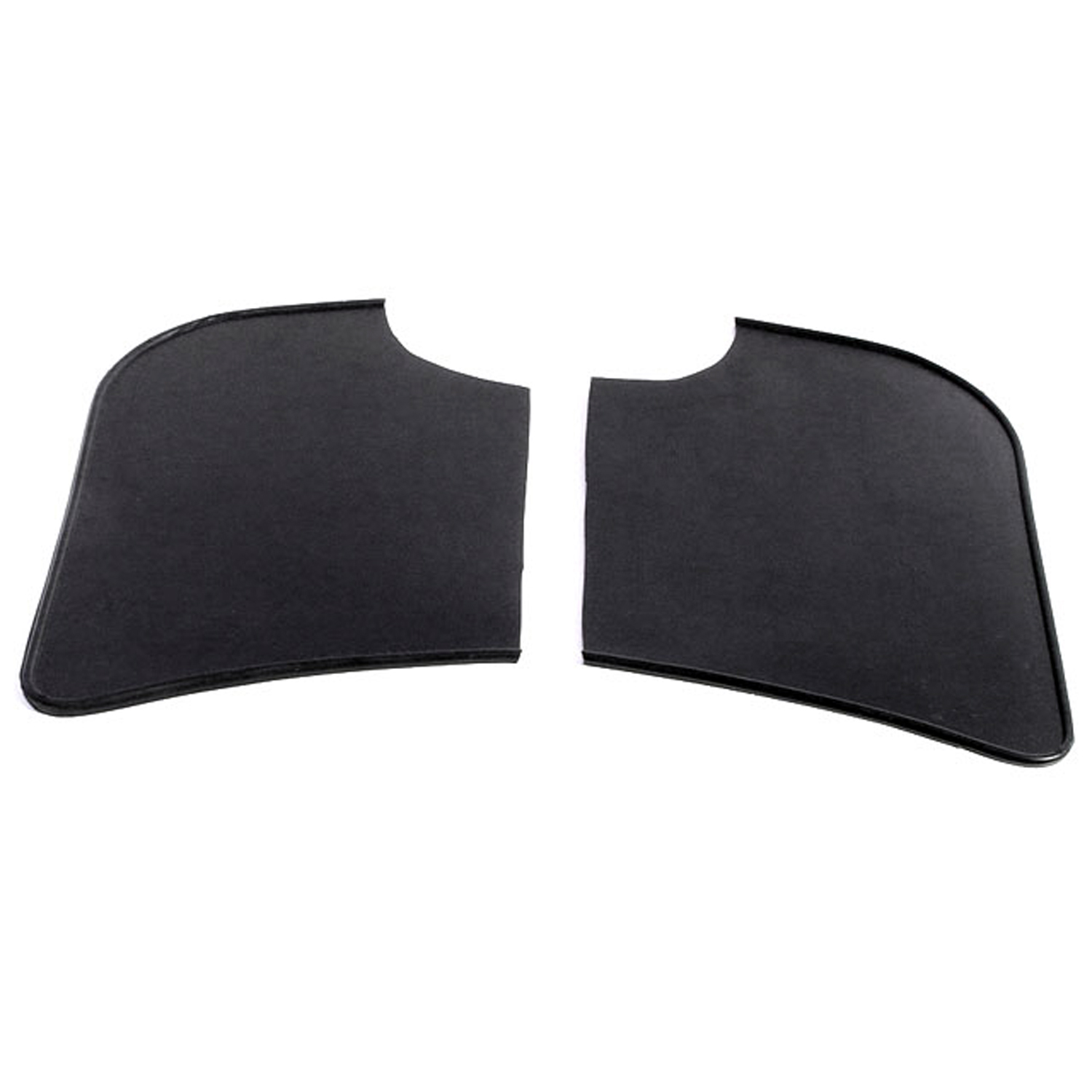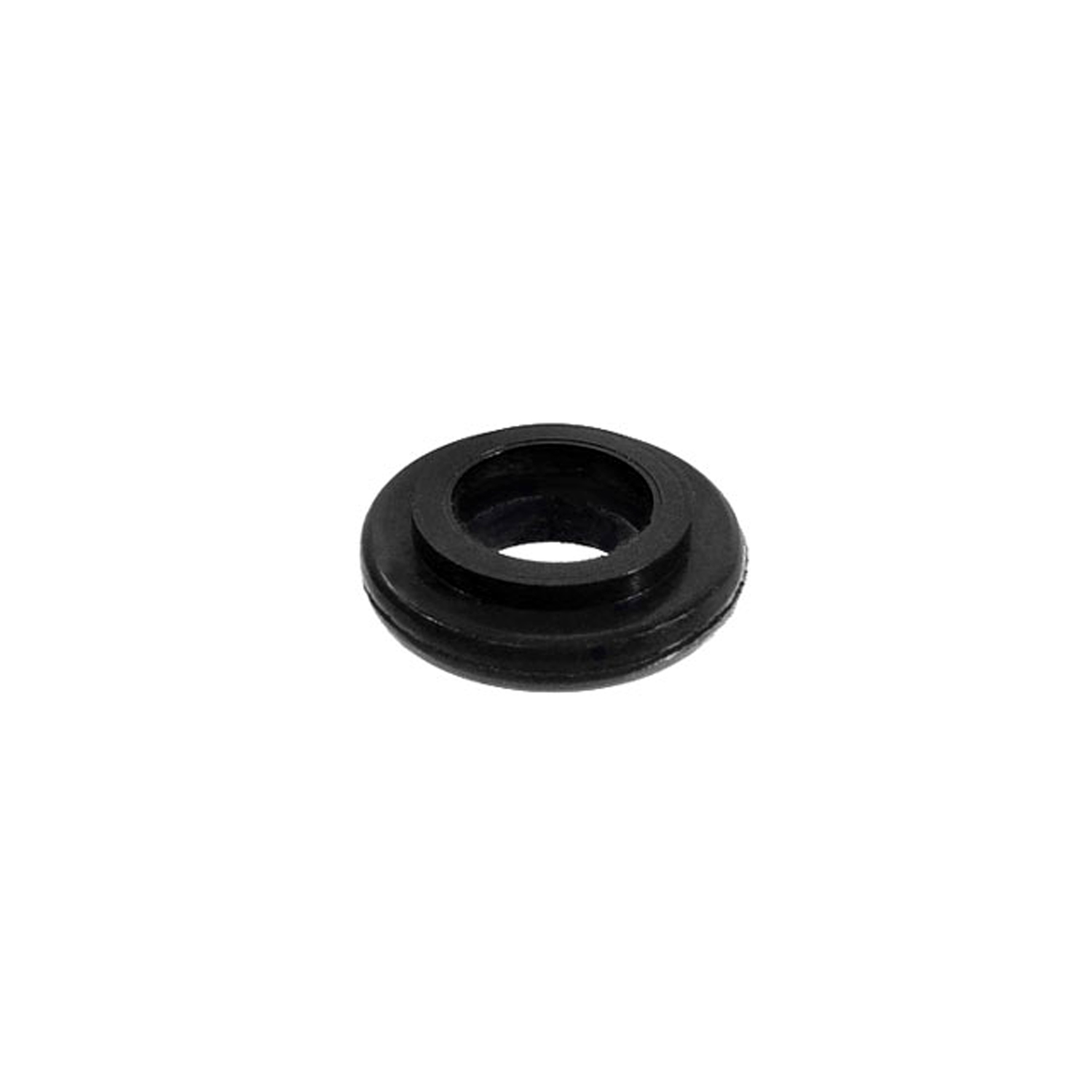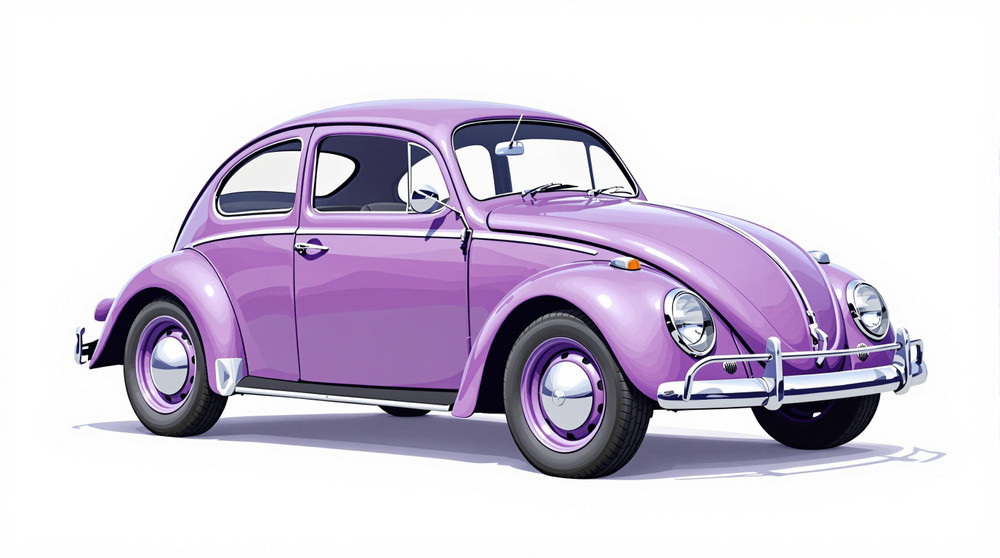Image of 1950 Volkswagen Beetle, Note: These illustrations use artistic license and may differ from actual historical models.
Performance Metrics
Fundamental Metrics
Emotional Appeal
MMP Rating
| Engine Specifications | |
|---|---|
| Engine: | Air-cooled, rear-mounted, flat four-cylinder |
| Displacement: | 1131cc |
| Horsepower: | 25-30 hp |
| Torque: | 49 lb-ft at 2000 rpm |
| Compression Ratio: | 5.8:1 |
| Ignition System: | Battery ignition system |
| Cooling System: | Air-cooled |
| Performance Specifications | |
| 0-60 Time: | 35 seconds |
| 1/4 Mile Time: | Not available |
| Top Speed: | 68 mph |
| Transmission and Drive | |
| Drive Type: | Rear-wheel drive |
| Transmission Type: | 4-speed manual |
| Fuel and Efficiency | |
| Fuel System Type: | Carburetor |
| MPG: | 32 mpg |
| Dimensions and Brakes | |
| Brakes: | Drum brakes |
| Wheelbase: | 94.5 inches |
| Weight: | 1615 lbs |
Note: Specifications for classic cars are given to the best of our ability, considering the limited and variant data available.
Introduction
The 1950 Volkswagen Beetle is an emblem of simplicity and charm on four wheels. Born from the vision of Ferdinand Porsche and the demands of pre-war Germany, this iconic vehicle emerged as a symbol of post-war recovery and became a global phenomenon. Its distinctive rounded shape, air-cooled rear engine, and economical operation etched it into the annals of automotive history. A unique fact that often surprises enthusiasts is that the Beetle was originally commissioned by none other than Adolf Hitler as a "people's car" (Volkswagen in German), making its transition to a beloved cultural icon all the more remarkable.
Design and Innovation
The exterior styling of the 1950 Volkswagen Beetle is instantly recognizable with its curvaceous lines and friendly front fascia. The interior was modest yet functional, with durable materials designed to withstand the test of time. Technologically, the Beetle was ahead of its era with features like the torsion bar suspension. Color options ranged from muted tones to vibrant hues, with pastel green and azure blue being popular choices. The most iconic body style remains the two-door sedan, which captured hearts with its practicality and unique aesthetic.
Historical Significance
The Beetle's impact on automotive design is profound; it popularized the rear-engine layout and demonstrated that small, affordable cars could be reliable and desirable. It set itself apart with an air-cooled engine that eliminated the need for a radiator, a feature that contributed to its simplicity and durability. The Beetle's influence persists in modern car culture, inspiring countless designs and fostering a dedicated following.
Performance and Handling
In terms of performance, the 1950 Volkswagen Beetle was not a powerhouse by today's standards, but it offered respectable figures for its time. With a top speed around 68 mph and acceleration from 0-60 mph in over 30 seconds, it was built for reliability over speed. Handling was surprisingly nimble due to its lightweight design, allowing it to tackle winding roads with ease. Driving a Beetle was an experience characterized by the unmistakable hum of its air-cooled engine and the simple joy of motoring in one of history's most endearing vehicles.
Ownership Experience
The Beetle served many roles from a daily driver to an occasional showpiece. Its mechanical simplicity meant that maintenance could often be performed by owners themselves, contributing to its reputation for reliability. While some criticized its lack of power or modern amenities, these were often overshadowed by its character and dependability.
Fun Facts
Among many trivia tidbits about the Beetle is that it held the record for the most-produced single model of car for decades until surpassed by another icon, the Toyota Corolla. Celebrities like Ted Bundy infamously drove a tan Beetle, which is now displayed in crime museums. Despite criticisms such as being underpowered or noisy, it became one of the best-selling cars of all time.
Collector's Information
The current value range for collectors can vary widely based on condition, originality, and historical significance. Estimates suggest that millions of Beetles were produced over its long run, but specific numbers for each year vary. As for appreciation value, well-preserved or restored Beetles have seen steady appreciation over time due to their iconic status. A 1950 Volkswagen Beetle in excellent condition could fetch anywhere from $15,000 to $30,000 or more at auction.
Conclusion
The 1950 Volkswagen Beetle stands as a testament to design longevity and universal appeal. From its controversial beginnings to becoming a beloved classic, the Beetle transcends mere transportation; it encapsulates an era and continues to charm enthusiasts around the globe. Whether you're a collector or simply someone who appreciates automotive history, there's no denying that this little car with a big story will continue to capture hearts for generations to come.
1950 Volkswagen Beetle Catalog of Parts
 1950 Volkswagen Beetle Gravel Shields. Molded flat without metal backing plates-FS 40Gravel Shields. Molded flat without metal backing plates. Apply with contact cement. 7-5/8" long X 5-5/8" wide at top. Pair
1950 Volkswagen Beetle Gravel Shields. Molded flat without metal backing plates-FS 40Gravel Shields. Molded flat without metal backing plates. Apply with contact cement. 7-5/8" long X 5-5/8" wide at top. Pair 1950 Volkswagen Beetle Oil Cooler Seal. 7/16" I.D., 7/8" O.D. Each-RP 8-BOil Cooler Seal. 7/16" I.D., 7/8" O.D. Each
1950 Volkswagen Beetle Oil Cooler Seal. 7/16" I.D., 7/8" O.D. Each-RP 8-BOil Cooler Seal. 7/16" I.D., 7/8" O.D. EachWhy Choose Metro?
For over 100 years, Metro Moulded Parts has been the pinnacle of quality in classic car restoration parts. Our commitment to precision and authenticity in every component ensures a perfect fit and an OEM-level appearance.
- Expert Craftsmanship & Quality: Each part is a testament to our dedication to reliability and perfection, crafted from original designs and thoroughly tested.
- Advanced Technology: We use cutting-edge techniques to create flawless, long-lasting parts that surpass others in performance.
- SuperSoft Sponge – The Ultimate Door Seal: Not only are our door seals 30% softer than competitors', but they're also guaranteed to never leak. They effectively reduce wind and road noise, enhancing your classic car's comfort and driving experience.
- Proudly American: Our parts are a product of American craftsmanship, made in the USA with a spirit of excellence and heritage.
- Unrivaled Warranty: We back our products with a 30-year industry-leading warranty, a testament to our confidence in their quality.
Join us in preserving the legacy of classic cars with parts that are crafted for perfection, not just made.

